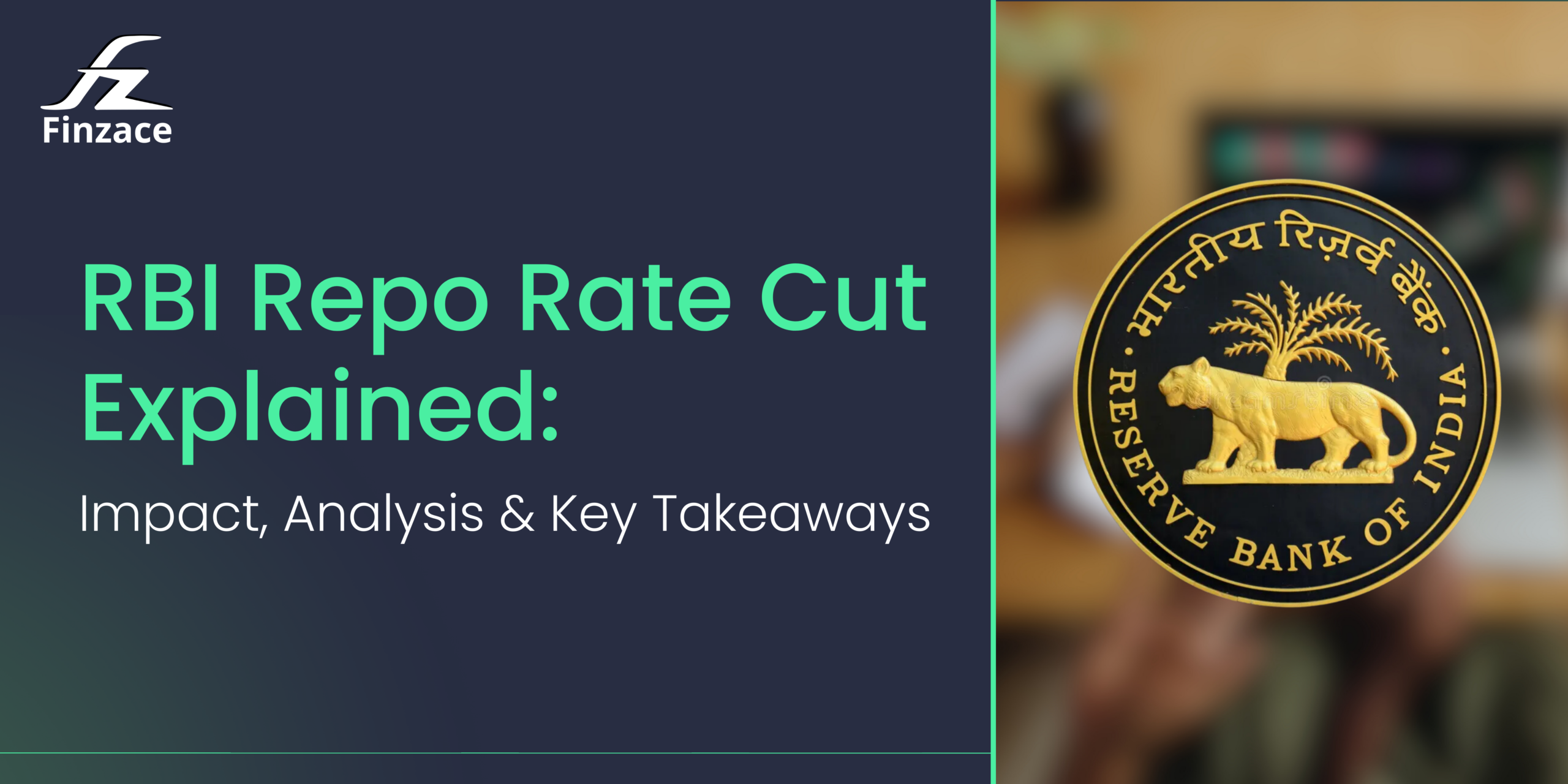RBI Repo Rate Cut Explained: Impact, Analysis & Key Takeaways

In a significant monetary policy move, the Reserve Bank of India (RBI) has cut the repo rate by 25 basis points, bringing it down to 6.25% – the first reduction in nearly five years. This decision marks a pivotal shift in India’s economic strategy and has far-reaching implications across various financial sectors. Let’s break down what this means for investors and the broader economy.
What Drives a Repo Rate Cut?
The RBI’s decision comes against the backdrop of India’s GDP growth projected to slow to 6.7%, a four-year low. With moderate inflation and signs of slowing urban consumption, this rate cut aims to stimulate economic activity and boost consumer spending.
Impact on Different Financial Instruments
Traditional Banking Products
Loans: Expect to see reduced interest rates on home loans, auto loans, and personal loans in the coming weeks. If you’ve been considering a major purchase, this could translate to lower EMIs and significant long-term savings.
Fixed Deposits: Banks are likely to lower FD rates in response to the repo rate cut. If you rely on FD income, you might see returns diminish, potentially making this a good time to lock in current rates before further reductions.
Savings Accounts: Interest rates on savings accounts may decrease, albeit marginally, affecting those who maintain substantial liquid balances.
Bonds and Debt Instruments
Government Securities: The rate cut creates a favorable environment for government bonds, which may see price appreciation as yields decline.
Corporate Bonds: Quality corporate bonds become particularly attractive in this scenario, offering competitive yields compared to traditional fixed deposits.
If you want to know more about corporate bonds, contact us.
Debt Mutual Funds: These funds, especially long-duration ones, stand to benefit from the potential capital appreciation resulting from falling interest rates.
Equity Markets
Stock Market Response: Historically, rate cuts tend to boost equity markets as lower borrowing costs improve corporate profitability and increase consumer spending power.
Sector-Specific Impact: Financial stocks, consumer goods, and real estate sectors often respond positively to rate cuts due to improved lending conditions and increased consumer activity.
Alternative Investments
Gold: As interest rates decline, the opportunity cost of holding non-yielding assets like gold diminishes. This, combined with economic uncertainty, often makes gold an attractive safe-haven investment.
Real Estate: Lower home loan rates typically stimulate housing demand, potentially leading to price appreciation in the real estate sector.
Small Savings Schemes: Government small savings schemes may see interest rate revisions in upcoming quarters, potentially reducing returns on instruments like PPF and NSC.
Strategic Investment Approaches Post Rate Cut
For Conservative Investors
- Consider laddering your fixed deposits to manage interest rate risk
- Explore government securities and AAA-rated corporate bonds
- Maintain some allocation to gold as a portfolio stabilizer
For Moderate Risk-Takers
- Look at short to medium-duration debt funds
- Consider balanced advantage funds that adjust equity-debt allocations based on market valuations
- Diversify across multiple asset classes including bonds and precious metals
For Growth-Oriented Investors
- Evaluate sectors likely to benefit from lower interest rates
- Consider systematic investment plans (SIPs) in equity mutual funds
- Explore REITs (Real Estate Investment Trusts) as interest rates decline
What Experts Are Saying
Financial analysts expect this rate cut to be the first of several, with projections suggesting up to 75 basis points in reductions through 2025. According to RBI Governor Sanjay Malhotra, the central bank is maintaining a “neutral” stance, allowing flexibility to respond to evolving economic conditions.
The Bigger Economic Picture
Beyond individual investment impacts, the rate cut aims to inject liquidity into the economy, potentially boosting business investments, employment opportunities, and consumer spending. This comes at a crucial time following recent tax cuts designed to increase disposable income.
Planning Your Next Steps
The repo rate cut creates both opportunities and challenges for investors. This is an ideal time to:
- Review your existing portfolio allocation
- Consider rebalancing to capitalize on potential growth areas
- Evaluate your debt strategy, including refinancing high-interest loans
- Explore alternative fixed income options that offer better returns than traditional savings
While navigating these changes, remember that diversification remains crucial – spreading investments across different asset classes helps mitigate risks while positioning your portfolio to benefit from evolving market conditions.
At Finzace, we’re committed to helping you navigate these shifting economic tides with our curated alternative investment options, including corporate bonds, corporate fixed deposits and digital gold. Our platform makes it simple to access these opportunities with transparency and ease.


